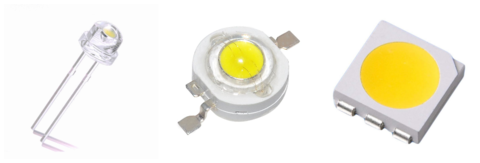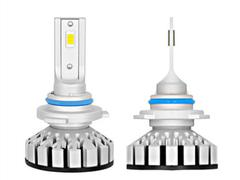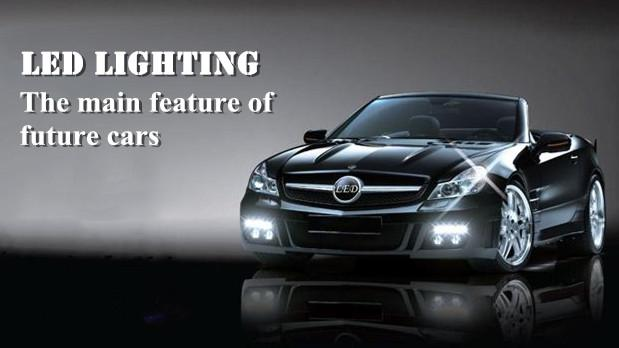Light Emitting Diode are referred to as LED. It is made of compound containing gallium (Ga), arsenic (As), phosphorus (P), nitrogen (N) or the like. When electrons and holes recombine, they can radiate visible light, and thus can be used to make Light Emitting Diodes. The gallium arsenide diode emits red light, the gallium phosphide diode emits green light, the silicon carbide diode emits yellow light, and the gallium nitride diode emits blue light. Classified according to chemical properties, can be divided into organic Light Emitting Diodes (OLED) and inorganic Light Emitting Diodes (LED).

The high cost of led lights is also gradually reduced with the growing technology and widespread use of led lights. It is currently being used more and more in vehicles, such as headlights (high beam and low beam), fog lights, tail lights, brake lights, turn signals, daytime running lights, pedal lights, instrument lights, license plate lights, door lights, interior lights, width lights, back lights and pilot lights, etc.
The luminous efficiency of LEDs is 80%~90%. If we use our daily energy-saving lamps for analogy, energy-saving lamps can save 4/5 more energy than incandescent lamps, and LEDs can save 1/4 more energy-saving lamps. In a car, LED components consume only 1/20 of the energy of the halogen lamp. The cost of LED components has also dropped significantly year by year, and current costs and prices are still falling by more than 20% per year.

The structure of the LED is strong and is not easy to be affected by vibration. Impact resistance, shock resistance is very good, not easy to break. It can adapt well to various environments.
The life of LED components used in automobiles can reach a level of 50,000 hours, and well-known automotive lighting suppliers have been able to provide LED components with a lifespan of 100,000 hours, which is equivalent to 11 years. Considering the frequency of use of the lights, in the design life of the vehicle, LED components basically do not need to be replaced. In contrast, the life of the xenon lamp is only about 3,000 hours. And LED make the shape and lines of the headlights richer, and the recognition at night is higher.

The LED lights up only needs microsecond. Used on taillights and turn signals to quickly illuminate for better warning. Taking brake lights and direction indicators as an example, assuming a vehicle speed of 125 km / h, that is, 35 m / s, the incandescent lamp’s hot start time is about 250 milliseconds, and the fast-responding LED can send a brake warning about 8 meters away ahead of time, thus effectively avoiding car collision. The same is true for the indicator light.

Due to the fact that LED headlights have not yet been widely popularized, the price is still high, so it is only listed as the exclusive configuration of high-end car models. Therefore, for the lower car models, most of the traditional halogen headlights are used. The traditional halogen bulbs use the tungsten filament to generate heat and brightness. Although the cost is low, there are often some problems, such as insufficient brightness, inaccurate light type, short life, and easy heating of the lamp body.


Undoubtedly, the use of high-brightness LED lighting will become the main feature of future cars, thanks to many fundamental advantages of LED over traditional incandescent lighting solutions. In addition, the use of LED lighting can also drive changes in automotive design techniques and design styles. However, just like any innovative technology, LED still have to overcome many difficulties before they are widely used in automotive lighting.


